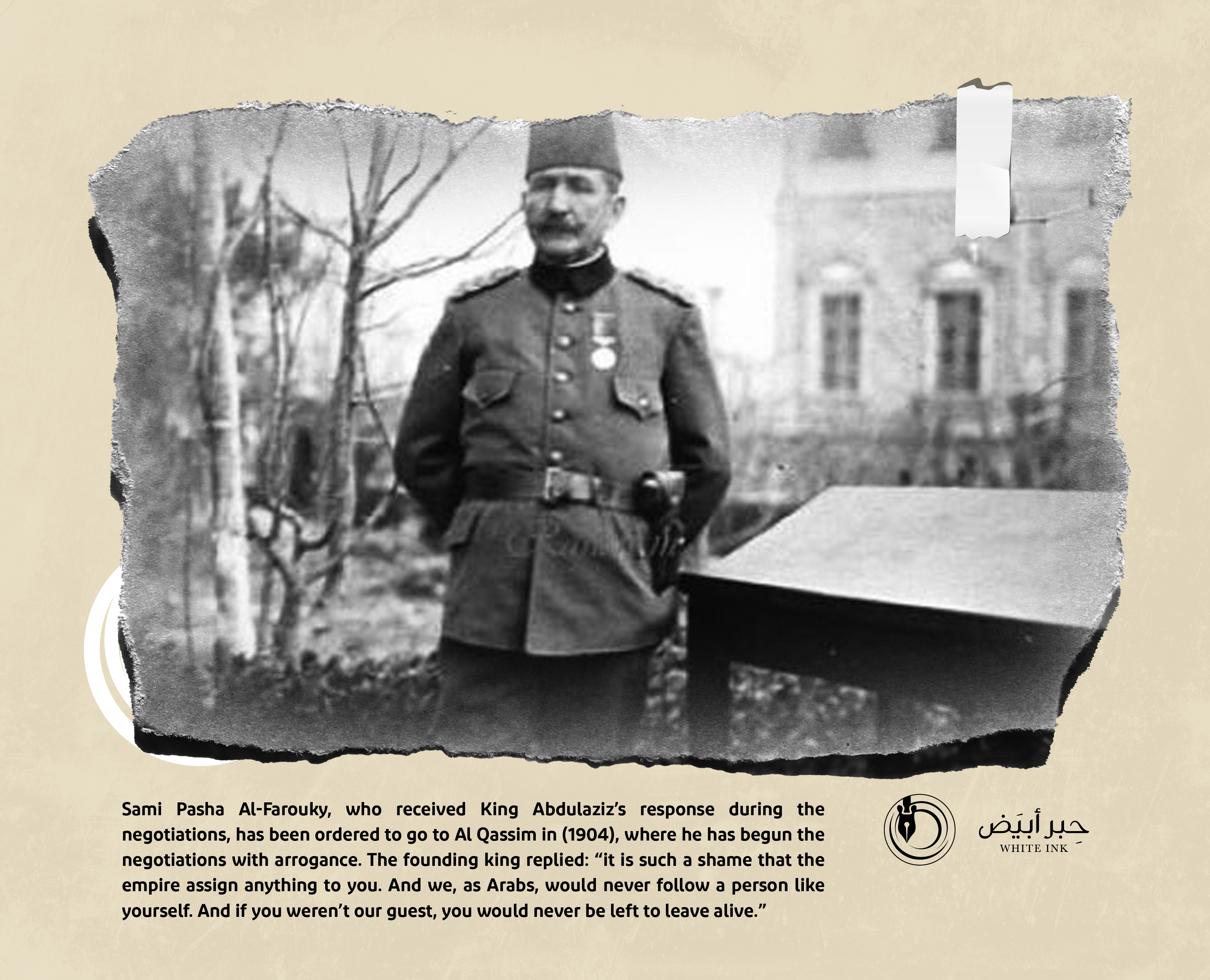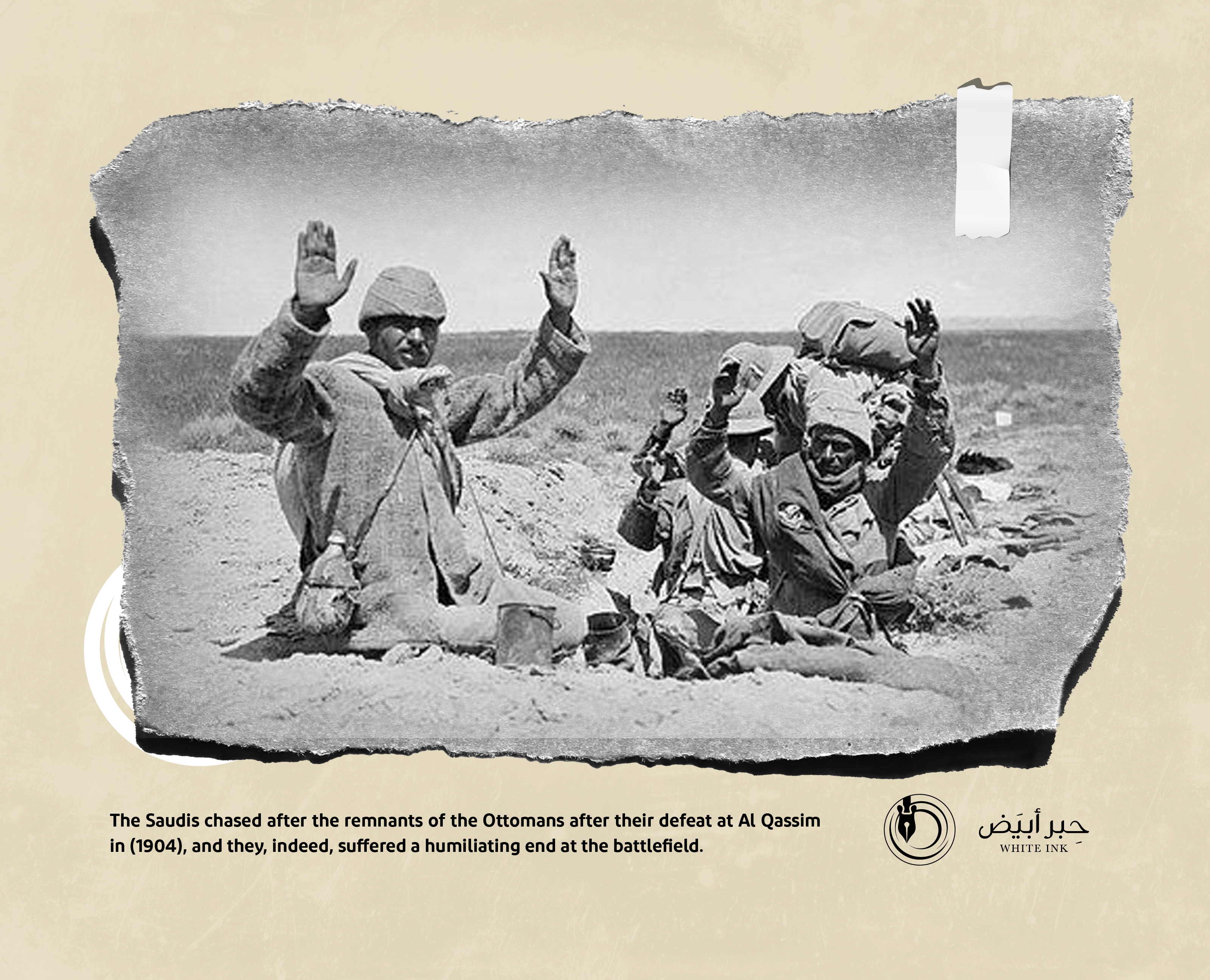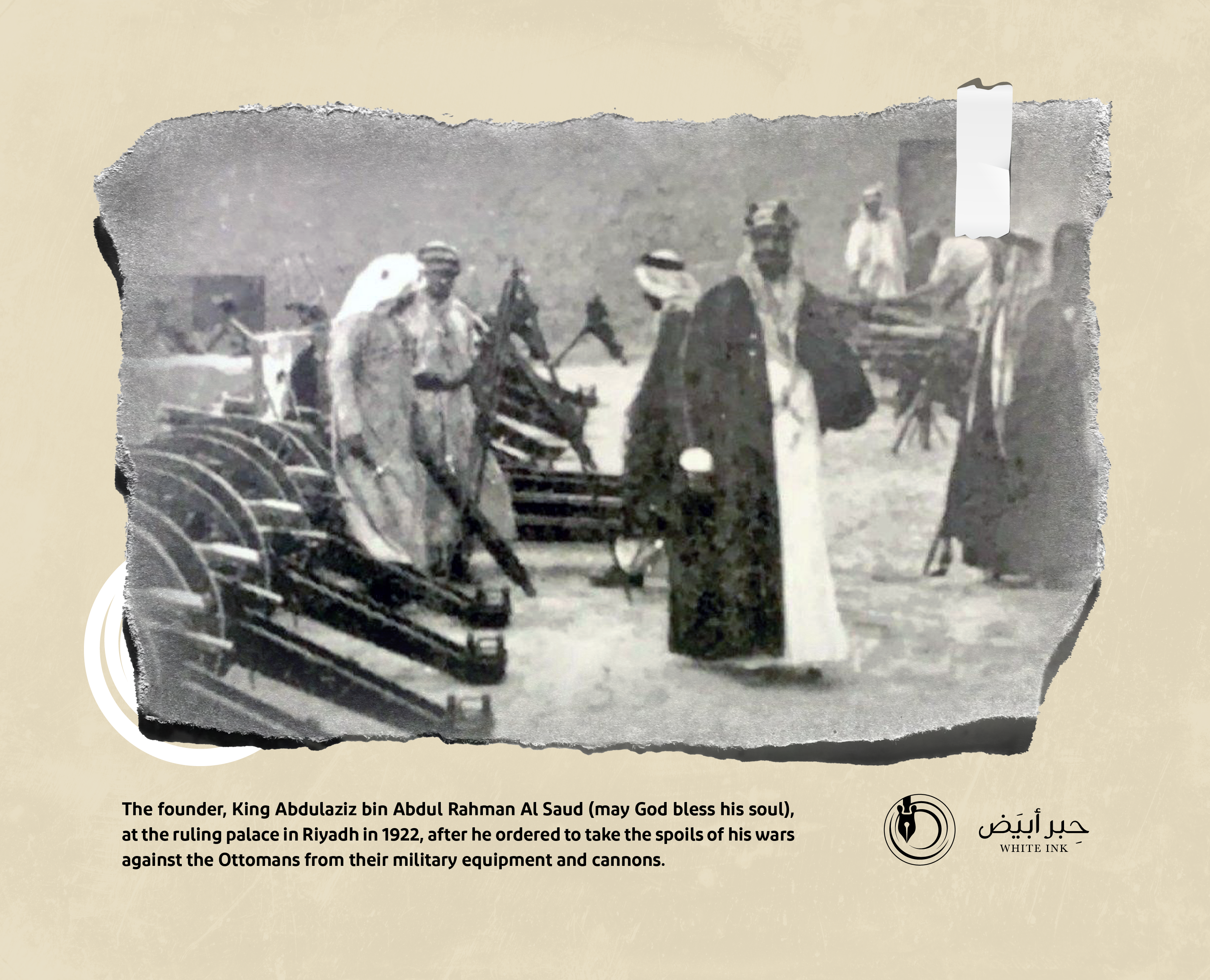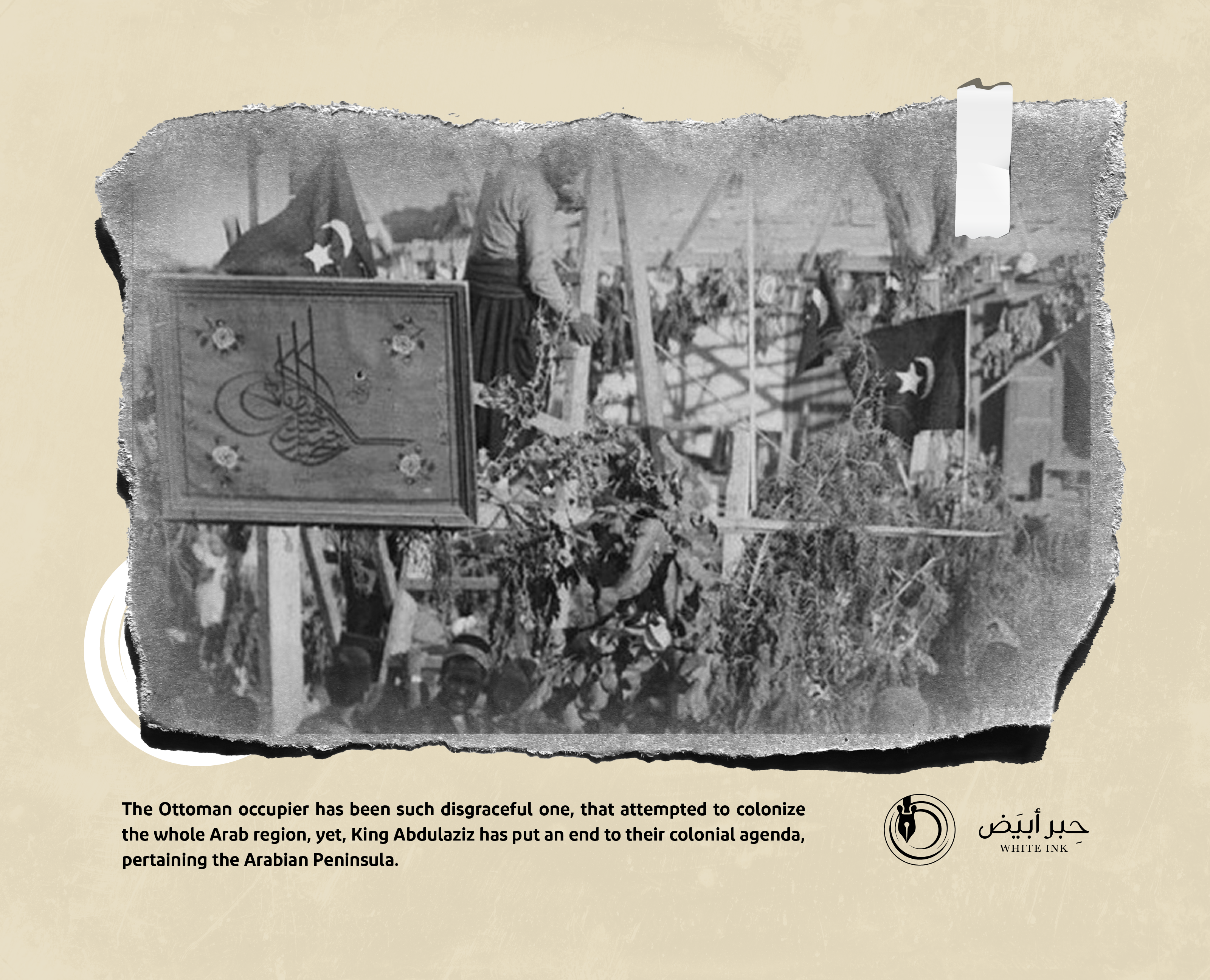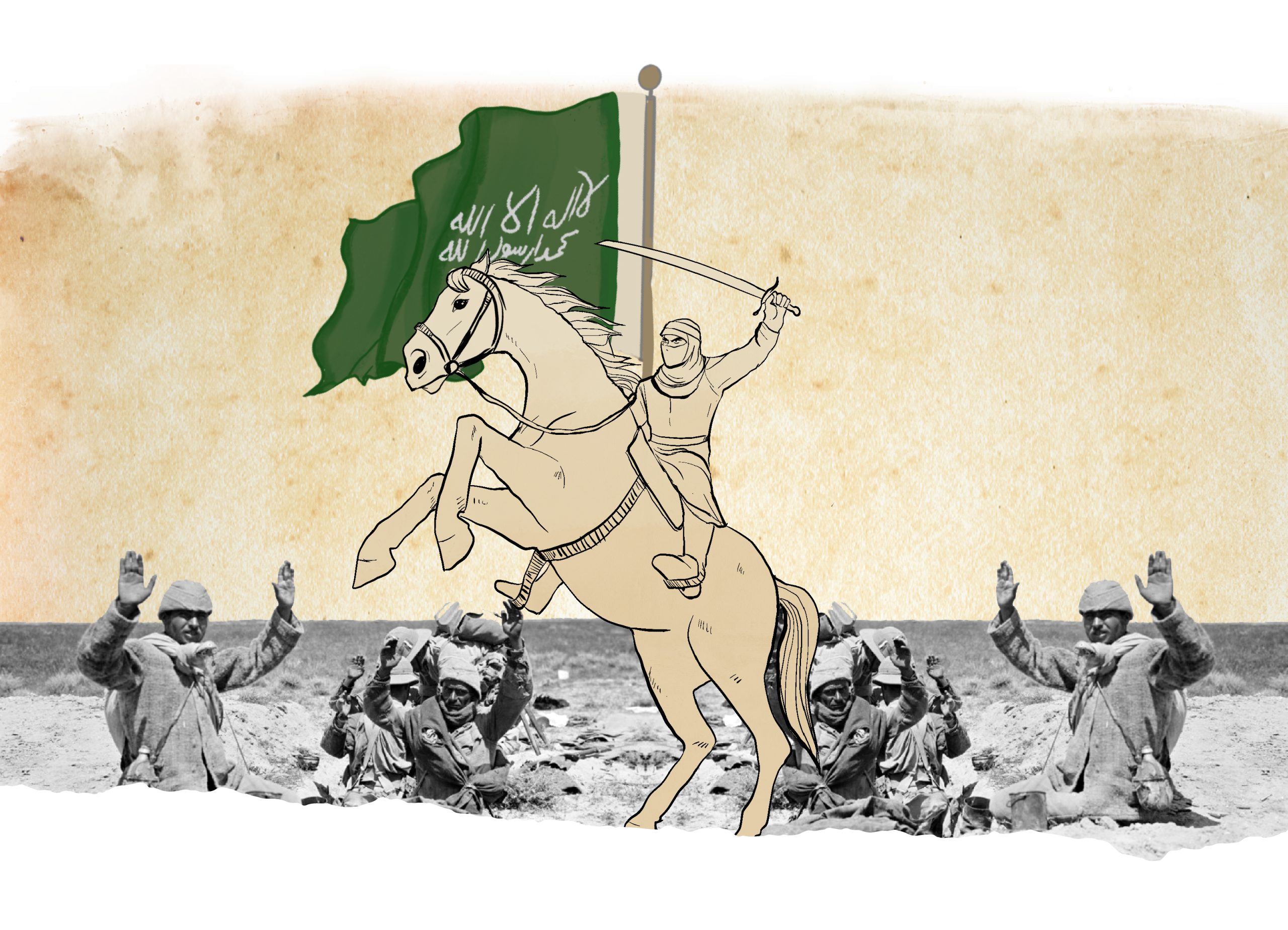
They sent eight regular military battalions
King Abdulaziz confronted the Ottomans in “Al-Bukayriyah” with the strategy of purification
The Battle of Al-Bukayriyah, on June 15, 1904, was a continuation of the Ottoman policies in their repeated attempts to extend their control and to occupy the Arabian Peninsula. It was also an extension of the historical wars with the Saudi state, which ended with a great Saudi victory by the founder, King Abdulaziz bin Abdulrahman Al Saud (may Allah have mercy on him). This resulted in the establishment of the Kingdom of Saudi Arabia after nearly two centuries of violent struggle to expel the occupier and establish a purely Saudi national Arab entity that raises the banner of Islam and protects the Two Holy Mosques from the occupation of the Turks by returning them to the care of the Arabs.
The Ottomans worked once again on creating internal conflicts in order to intervene in favor of one party at the expense of another among the political parties, as usual, to ensure the subordination and loyalty of one power against another. This was in order to continue their attempt to control the Arabian Peninsula, a control that the Saudis always confronted whenever it extended to their borders, and it was also the strategy that has been fixed in the Ottoman colonial dealings throughout history.
The battles of unification that King Abdulaziz fought with the Saudis to unify the nation made them forced to engage in wars with several local political entities. This made the Ottomans take advantage of the matter and ally with the opponents of King Abdulaziz. This issue called for ignoring the internal conflicts and moving to a war of liberation against the Ottoman domination to impose the will of the landowners.
As usual, the Ottomans tried to use the method of sedition and their humiliating defeats were repeated.

In this regard, the Ottoman Empire made an alliance based on pure interest between it and Al Rasheed Emirate, represented in its ruler Abdulaziz bin Rasheed in Ha’il. It employed him in its conflict with King Abdulaziz. The emirate was looking forward to military and material support, while the Ottomans aspired to position it as a garrison and a colony for them, from which they would launch their attacks against King Abdulaziz to stop him in the stage of unification. Accordingly, the Ottomans provided Ibn Rasheed with a number of regular soldiers with modern weapons, cannons and supplies. The number of soldiers reached 1500 Ottoman soldiers. The Battle of Al-Bukayriyah (1904) was an inevitable result of the Ottoman mobilization of Ibn Rasheed against the Saudi army. The most important feature of the battle was that being a decisive station in the Saudi-Ottoman conflict.
Historical documents agree that King Abdulaziz divided his army into two divisions: The first and largest division was to confront the forces of Ibn Rasheed, while the other division of the army ensured the confrontation of the Ottoman Turkish army, which was relatively small in number compared to the forces of its ally, Ibn Rasheed.
During the confrontations, King Abdulaziz used an ingenious tactical plan to direct the battle in his favor which reflected savvy and deep awareness, as he wanted to divide the forces of enemies and opponents. He imposed his will on the battlefield when he ordered the first division of his army to pretend defeat tactically, while the second division was superior to the Ottoman regular army. After that, he assembled the entire Saudi forces to eliminate the largest part, which was represented in the forces of Ibn Rasheed, declaring the end of the battle with a crushing victory for the Saudis over the Ottoman forces and their ally.
The result of the battle was shocking to the Ottomans, as they expected to win a battle to which they sent eight regular battalions of their powerful military battalions and reinforced these battalions with Ibn Rasheed’s forces as a kind of assurance to win battle.
They did not realize that they were dealing with a first-class military and strategic figure represented in King Abdulaziz. As usual, the Saudis and their Imams always surprised the Ottoman enemies on the battlefield, as this was repeated in the era of the first and second Saudi states. On several occasions, the Ottomans confidently believed that they would win and then were surprised by their defeat. Although the real data in terms of numbers and equipment indicated that they would win, but the secret was represented in what they constantly lacked in confronting the Saudis: wise leadership, courage and sincere faith in defending religion and the homeland.
It was the decisive battle that ended the Ottoman sedition in the Arabian Peninsula.

Therefore, the Battle of Al-Bukayriyah was one of the last Ottoman temptations which they tried to use to impose their colonization of the Arab region and the Arabian Peninsula in particular, at a time when their state was like a sick man, gradually eroding before finally collapsing by Mustafa Kemal Ataturk in 1924.


- Amin Al-Rihani, The History of Najd and its Appendices, 4th edition (Beirut: Dar Al-Rihani, 1970).
- Bander bin Nahel, King Abdulaziz bin Abdulrahman Al Saud, his military geniality and his political savvy (Riyadh: National Guard Presidency, 1999).
- Hafez Wehba, The Arabian Peninsula in the Twentieth Century (Writing and Translation Committee, 1935).
- Khair Al-Din Al-Zarkali, The Arabian Peninsula in the Era of King Abdulaziz, 3rd Edition (Beirut: Dar Al-Ilm LilMalayin, 1985).
- Abdullah Al-Othaimeen, History of the Kingdom of Saudi Arabia, 12th Edition (Riyadh: Al-Obeikan Library, 2003).
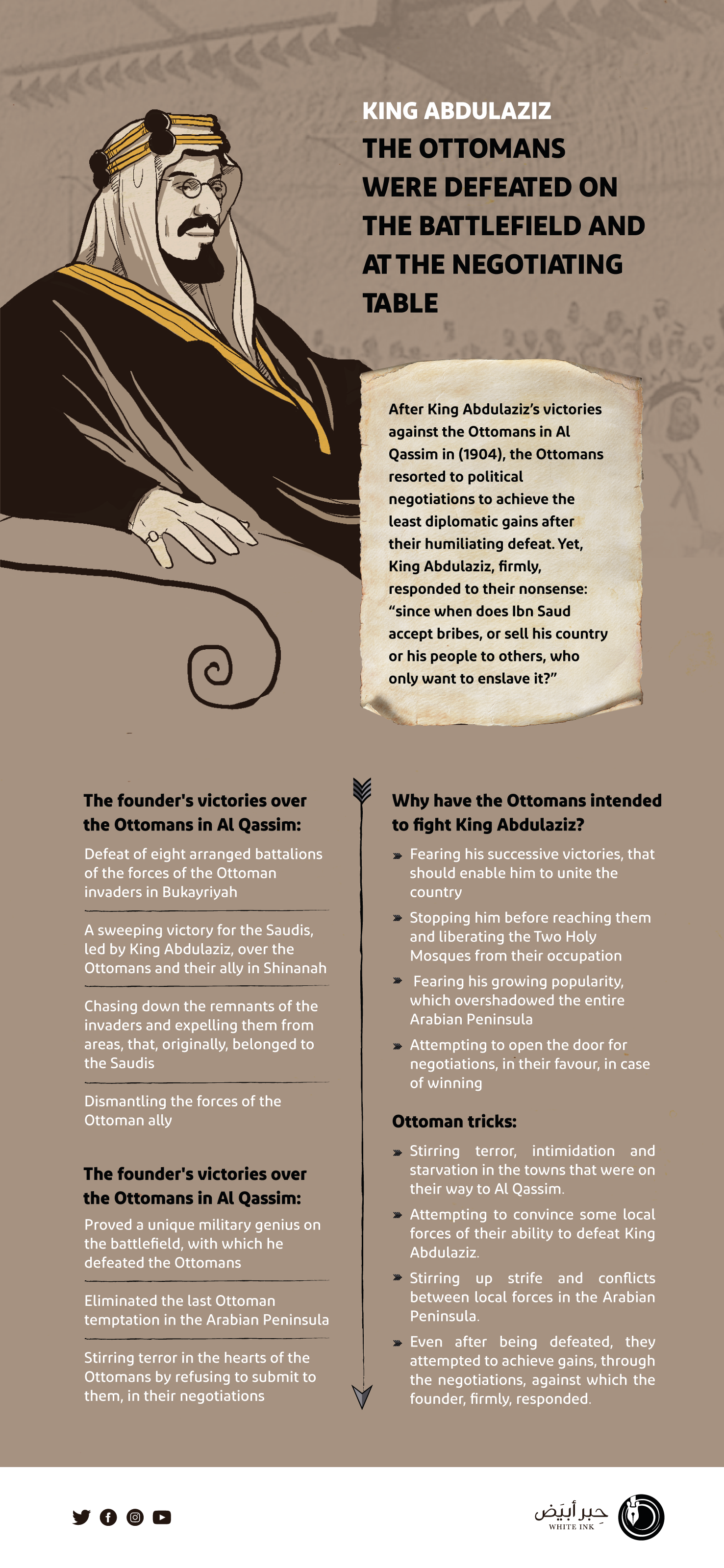
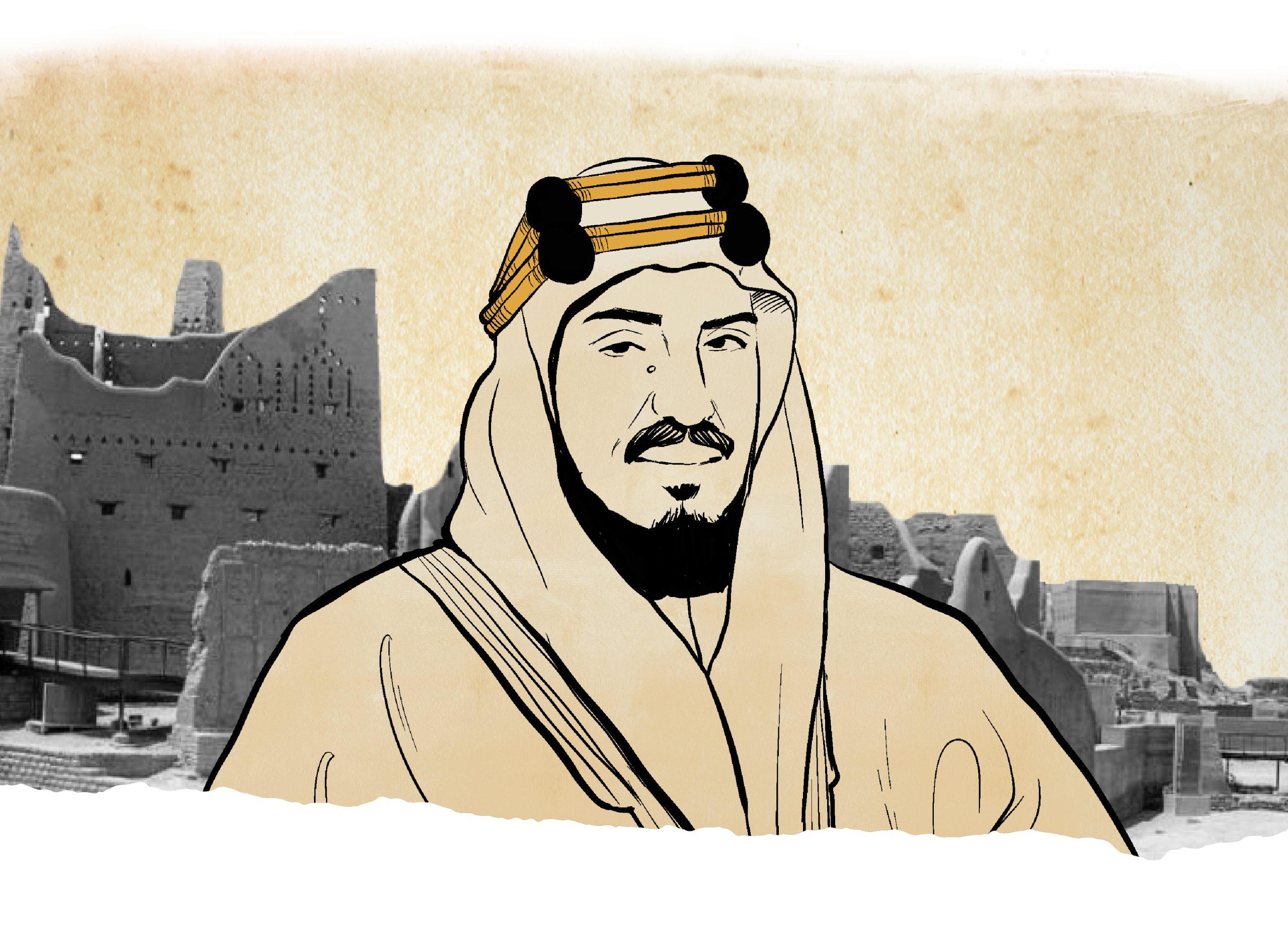
As a repetition of the historical lesson
The founder, King Abdulaziz, establishes the national concept that the Ottomans never understood
The Ottomans, with the help of their allies in the Arabian Peninsula, were able to overthrow the second Saudi state. However, what was difficult for the Ottoman Turks was that they did not comprehend the historical lesson and benefit from it, as the political collapse does not mean a long-term collapse. When the first Saudi state was established and then the second politically, it was originally established in the hearts of the Saudi people, and loyalty to the Al Saud family continued in the hearts of all people and in the Arabian Peninsula.
The year in which King Abdulaziz returned to retrieve Riyadh (1901) was a year for the launch of the greatest Saudi national epic to build a great homeland represented in the Kingdom of Saudi Arabia. King Abdul-Aziz recovered Riyadh, convinced that it was the first building block from which he would proceed to the rest of his Saudi borders. Therefore, by 1903, he had recovered Al-Washm and Sudair and had set out in many directions from Riyadh to the rest of the country.
1904 was a significant year in the history of the Kingdom of Saudi Arabia. That was the year in which King Abdulaziz headed for Al-Qassim, the region that had a strategic impact on the balance of power between him, his opponents and the Ottoman Empire, where he recaptured Unayzah, Buraidah and the rest of the towns of Al-Qassim. That matter confused the Ottoman Empire, those who supported their ally Abdulaziz bin Rasheed in Ha’il, as the Saudi forces became close to them to recover what was left of the homeland in the north.
The Ottomans were determined to stop the victories of King Abdulaziz and his expansion in the Arabian Peninsula, so they sent eight battalions of regular soldiers. A part of them came from Medina under the leadership of Sedki Pasha, and another part came from Baghdad under the leadership of Faydi Pasha in order to support their local allies and confront the Saudis in Al-Qassim.
The first confrontation between King Abdulaziz and the Ottoman forces with their local allies took place in Al-Bukairyah. The confrontations continued for a long period, during which the Saudis, led by King Abdulaziz, were able to give the Turks and their allies a harsh and unforgettable lesson. Philby describes the enormity of the matter saying: “It is hard to believe how an entire Turkish force of eight battalions was defeated in the battle”. What explains Philby’s astonishment is that the Saudis were not submissive to logical data on the battlefield, as the same thing was repeated in several battles in the era of the first and second Saudi states, and here it is repeated with King Abdulaziz.
King Abdulaziz rejected the defeatist offer made by the Ottomans after the battle of Al-Shanana.

The Saudis are fighting the Ottoman enemy in all their military confrontations throughout history with an important psychological factor, which is that they are fighting in defense of their land, honor and faith. This was repeated in the war of King Abdulaziz and his army in Al-Bukairyah. Also, King Abdulaziz was believing and seeing the image of his great homeland, which he sought to establish, so the greatest Ottoman military force or others could not have stopped him.
Therefore, King Abdul Aziz was not satisfied with his victory in al-Bukairyah. He went after the remnants of the Ottoman Turks and their local allies through Khobar and Al-Rass until the Battle of Al-Shanana occurred in September 1904, in which he defeated the Turks and their allies again.
With the defeat of the Ottomans in Al-Shanana, the Ottoman Empire realized the growing power of King Abdulaziz in the region, so it resorted to the negotiation with him. The Ottomans suggested making the Al-Qassim a neutral area, provided that an Ottoman garrison would be settled in it and that King Abdulaziz would be their loyal ruler there. However, King Abdulaziz did not accept such an offer as he was the victor, did not care about the negotiations of the enemy and refused to submit to the Turks. He continued his policy of purging the homeland of the Ottomans on his way to unifying the entire borders of the homeland.
King Abdulaziz was thinking beyond what the Ottomans thought. The founder seeks to establish a homeland and the Ottomans seek to achieve gains. The difference between the two goals is huge. The attempts of the Turks and their allies were much less than the ambitions of the founder, so they could not deter the country led by King Abdulaziz, despite their forces and attempts.


- Amin Al-Rihani, The History of Najd and its Appendices, 4th edition (Beirut: Dar Al-Rihani, 1970).
- Bander bin Nahel, King Abdulaziz bin Abdulrahman Al Saud, his military geniality and his political savvy (Riyadh: National Guard Presidency, 1999).
- Hafez Wehba, The Arabian Peninsula in the Twentieth Century (Writing and Translation Committee, 1935).
- Khair Al-Din Al-Zarkali, The Arabian Peninsula in the Era of King Abdulaziz, 3rd Edition (Beirut: Dar Al-Ilm LilMalayin, 1985).
- Al-Sayed Rajab Haraz, The Ottoman Empire and the Arabian Peninsula (1840-1909), (Cairo: Institute of Arab Research and Studies, 1970).
- Abdullah Al-Othaimeen, History of the Kingdom of Saudi Arabia, 12th Edition (Riyadh: Al-Obeikan Library, 2003).
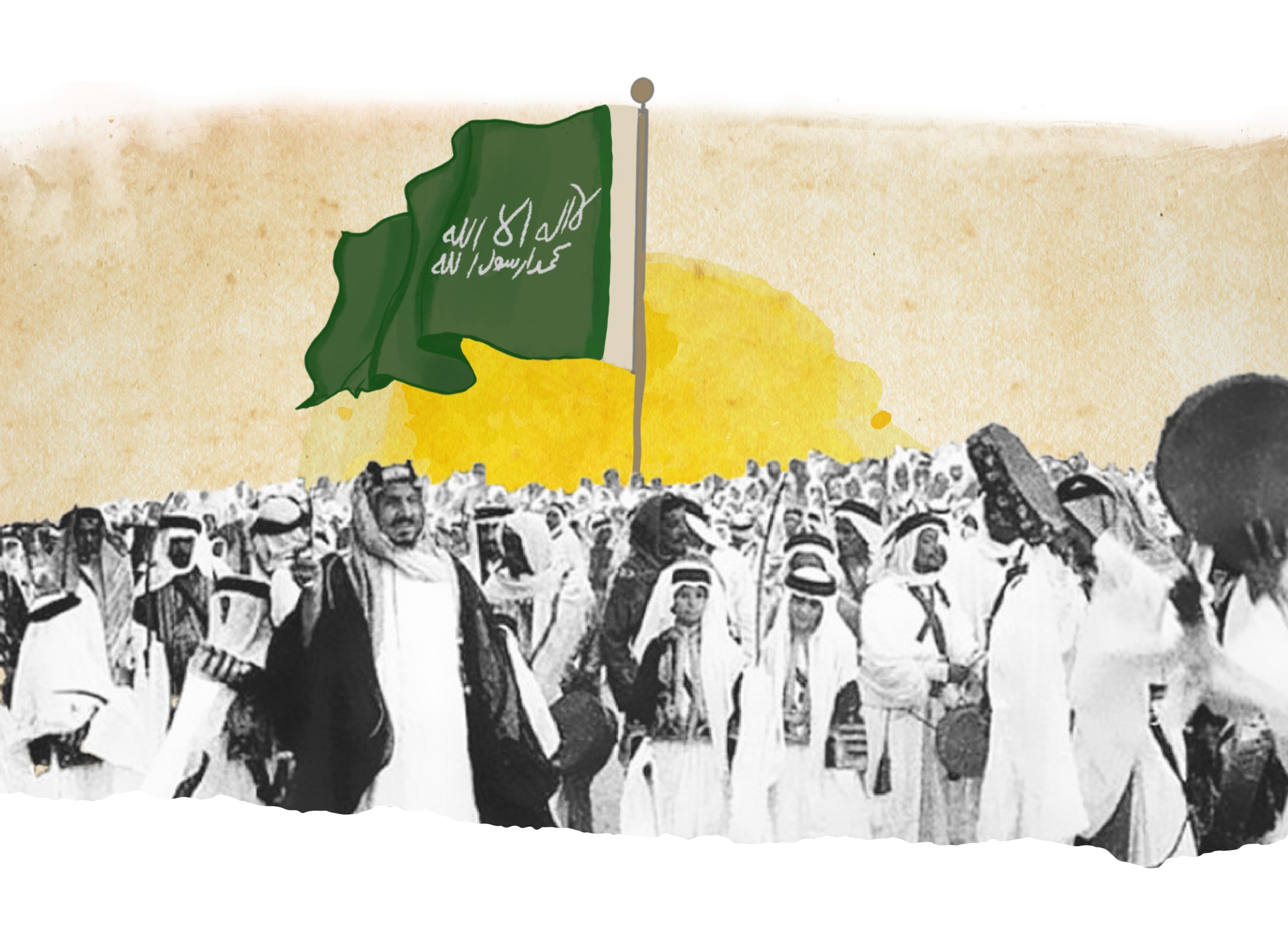
Persistence, determination and strength in King Abdulaziz's response to the Ottoman delegate:
When did it happen that Ibn Saud would accept a bribe or sell his country and its subjects to people who want to enslave it?
After King Abdulaziz bin Abdul Rahman Al Saud – may God have mercy on his soul – managed to recapture Riyadh in 1902; he subsequently embarked on his major operations to unify the land of the Arabian Peninsula, seeking God’s help first, and then his belief that the people of the Arabian Peninsula would have a state and government that would take into account God and fear him, and treat them with kindness and justice.
From this standpoint, King Abdulaziz began to unify the regions of Al-Arid, Al-Washam, and Sudair, and south of Riyadh before, then he focused on the Al-Qassim region, which has a strategic location in geopolitical terms, as It is a link between Najd and the north of the Arabian Peninsula and a crossroads of the trade routes that exit from it towards Iraq and the Levant, in addition to all of that, it is in the center between the borders of the Saudi state that was established by King Abdulaziz and the Ottomans with their ally Abdulaziz bin Rashid, who strived to stop the stage of unification undertaken by the founder King Abdulaziz (may God have mercy on his soul).
The Ottoman Empire felt the gravity of the matter as King Abdulaziz approached from Al-Qassim to it and its ally in the Arabian Peninsula, so it supported him to preserve his political existence, so it provided him with regular soldiers to confront the founding king. The battles of Al-Bukairiyah and Al-Shanana in which King Abdulaziz confronted the Ottomans and their ally face to face in 1904. Historical sources indicate that the Ottoman Empire provided Ibn Rashid with a large number of regular soldiers with their modern weapons of cannons, which were more than six cannons and large quantities of weapons, ammunition and supplies.
Number of soldiers was estimated at more than one thousand five hundred. At first, Ibn Rashid confiscated what he found from the camels of Aqilat al-Qassim, and hold them responsible for a large part of the food, supplies, and weapons, he obtained, which he transported from Iraq to Najd, and quickly set out to Al-Qassim with the Ottoman regular army; Their forces were estimated at about Ten thousand fighters to confront King Abdulaziz and stop him before recovering all of Al-Qassim.
Against those crowds, King Abdulaziz, while in Buraidah, called for the people of the desert and Al-Hadrah to meet him. The number of arrivals was several thousand warriors. He marched with them out from Buraydah and settled in Al Busr, then he traveled with them towards Al Bukayriyah, in an attempt to prevent his opponents from entering it and confronting him.
The Saudis fought fiercely, so Prince Saud Abn Hdhlwl mentions in his book “The history of the kings of the Al-Saud” that the deaths of the Ottoman soldiers were about one thousand and five hundred, many of them were officers. It was a glorious victory for the Saudis who captured a number of Ottoman soldiers and looted some cannons and returned to Al-Bukairiya at night.
King Abdulaziz set out in all the countries of Al-Qassim to secure them from the oppression of the enemies. The people of the towns refused to submit to the occupier and the forces of Ibn Rashid. Therefore, some towns’ palm trees, including Al-Khobraa, were cut down and the town was attacked with cannons. Therefore, King Abdulaziz decided to save the people, and sought to protect them from their oppression, so he sought to expel the invaders and track down the remnants of the defeated Ottoman army and Ibn Rashid.
The Ottomans and Ibn Rashid settled in Al-Shanana and camped therein. The forces of King Abdulaziz bin Saud settled in Al-Rass; the outcome of the Battle of Al-Bukairiya was positive, as it led to raising the morale of the Saudis, and that they were able to defeat the columns of the regular Turkish army and their ally who was crushed in the battle
King Abdulaziz competed with the Ottomans and Ibn Rashid over the towns in Qassim, including Ibn Aqeel Palace, which King Abdulaziz expected the defeated to go to. He arrived before them and ambushed them. When they approached, he went out to them and a fierce fighting took place, as a result of which, the Turks were defeated, and fled, and Ibn Rashid was defeated and left many spoils of ammunition, weapons, money and gold. The king’s forces spent ten days to collect all of it, and they carried the Ottoman gold chests to Unaizah.
One of the most important results of the Battle of Shanana was the disintegration of the Ottoman forces and their ally, due to the strategy followed by the founding king and his experience in choosing locations and his courage in fighting. After the battle, a dispute occurred between Ibn Rashid and the Ottoman officers. The Ottomans also knew that they were facing a strong figure in the Arabian Peninsula that could not be overcome, as they were facing the founding King Abdulaziz bin Abdul Rahman Al Saud, as they realized that he was the only one capable of ending their dreams of the Arabian Peninsula under their control, and they were convinced that he was the only one who would expel their garrisons from it.
Therefore, the Ottoman Empire made contacts with King Abdulaziz, and this led to holding negotiations, so the commander of the Ottoman forces, Hassan Shukri, sent to King Abdulaziz a letter accusing him of fomenting sedition in the Arab countries and offering him advice with a veiled threat, and he received a shocking response from King Abdulaziz, who exposed the Turkish their role in the events took place in the Arabian Peninsula.
The founder, King Abdulaziz, taught the Ottomans a lesson in negotiation using the logic of force after he struck terror in their hearts on the battlefield.

The Saudi historian Abdullah bin Muhammad Al-Bassam narrates in his famous masterpiece, the response of King Abdulaziz, as he responded to Hassan Shukri by saying: “As for your saying that the Commander of the Faithful was informed of this sedition in the Arab countries, and it was only easy for him to reform it,
Oh my God! Is not he aware of the shenanigans taking place? as he is the mastermind behind it and it is what he aims for. As for your saying that the Great Caliph sent you to see the dispute between me and Ibn Rashid, it is only because you want to betray my emirate. If the matter was as you claimed, you would have looked into the matter, to whom the country of Najd belongs. You could have intervened four years ago, and before we became suspicious of your bad actions, but now we do not accept advice from you and do not acknowledge your sovereignty, and it is better that you leave this place if you do not want to shed blood. If you marched to us, there is no doubt that we will treat you as our aggressors, if you are free and fair, then you are aware that the reason for my disobedience is my lack of trust in you, and what they and the pilgrims encounter in Al-Masjid al-Haram of pillage and plunder. So, any advice would you give me, Your Honorable prince, along with the bad intentions I witnessed in the country, the malicious intentions of the workers and the wish of the all Muslims, is to have someone prepared to protect their estate and lead them to greatness. In summary, all those workers whom we saw as traitors and hypocrites, so there is no obedience to you upon us, but we see you as the rest foreign countries “.
The response clearly showed the decisive stance taken by King Abdulaziz against the Turks, stating the reasons and grounds that made him not to trust them, and presented a comprehensive review of the situation of the Arab region that was under their rule and their tyrannical and arrogant oppression. King Abdulaziz dealt with intelligence and cleverness with that threat, and the Turks realized that their position was disrupted in Najd, so they sent Field Marshal, Ahmed Faydi Pasha to negotiate with King Abdulaziz in Unaizah, who did not reach an agreement that satisfies all parties, and did not complete his negotiations due to traveling to Yemen, and appointed Sedqi Pasha to carry out this task and solve the problems.
Sedqi Pasha took control of the Turkish army in Al-Shihiyah, and did not move a finger, so was neither a warrior nor a pacifist, but a spectator, then he began negotiating later and described King Abdulaziz, saying: “As for Ibn Saud, he is the diplomat of the desert, showing ingenuity in dealing with others.” Then Sedqi Pasha was summoned to Baghdad in (1906), and the area was handed over to Sami Pasha Al-Faruqi, who came to Al-Qassim from Medina with a military force of 500 soldiers, in an attempt to improve the situation of the Turks there. When he reached it, he requested a meeting with King Abdul Aziz to negotiate.
During that meeting, Hosni Pasha uttered words that were disapproved of by King Abdulaziz, and he became extremely angry with him and said: “I apologize for what appeared from you, I also apologize for the state that entrusts its affairs to the likes of you. The Arabs would not have been obedient, and were it not that you were a guest with us, we would not have let you go. Sami Pasha tried to extract a recognition from King Abdulaziz of the Turkish sovereignty over Qassim and to be affiliated with the Ottoman Empire. King Abdulaziz replied in response by saying: “When did Ibn Saud accept a bribe or sell his country and his subjects to people who want to enslave it?” Such strong stance from King Abdulaziz led to terrorizing the Turks and achieving strategic victory on the battlefield, militarily and morally over the enemies.


- Khalid Faraj, News and eyewitnesses in the history of Najd, investigation: Abdulrahman Alshaqeer (Riyadh, Obekan Bookstore, 2000).
- Khalifa Abdulrahman Al-Masoud, Al-Shanana and its historical role through the stages of Saudi rule (Riyadh, Narjis Printing Press, 2006).
- Saud Abn Hdhlwl, The history of the kings of the Al-Saud, 2nd ED (Riyadh: Medina Printing, 1982).
- Abdullah Uthaymeen, King Abdul Aziz famous battles to unify the country, (Riyadh, Obekan Bookstore, 1995).
- Abdullah Al-Bassam, Tuḥfat al-mushtāq fī akhbār Najd wa-al-Ḥijāz wa-al-‘Irāq, (Riyadh, King Abdulaziz Foundation (Darah(, 2004).
- Muhammad Bin Abdullah Al-Abd Al-Qader Al-Ansari, Tuḥfat al-mustafīd bi-tārīkh al-Aḥsā’ fī al-qadīm wa-al-jadīd, 2nd Edition (Riyadh: Almaarife, 1982).


